The awkward prototypes of gaming's iconic heroes
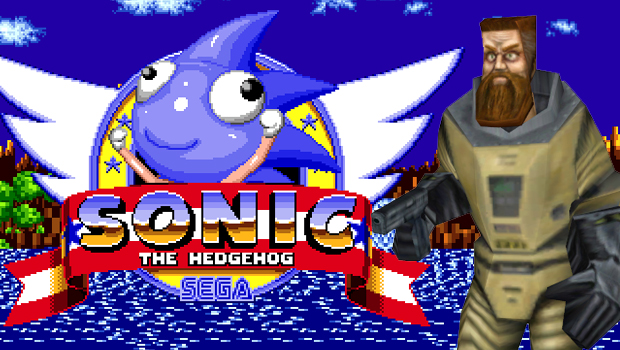
In the beginning
Every video game icon had to start somewhere. Before they were stars in triple-A games and countless spin-offs, every hero began his or her existence as a scribbling in a designer's scrapbook. That initial concept will go through myriad redesigns, with characteristics being added, modified, or scrapped with impunity. As a game starts to take shape and the developers decide what direction they want to go, only then will their protagonist near its final form.
But all that work happens behind the scenes. As gamers, we're usually only privy to viewing the finished product, unaware of how much focus-testing and overhauls the lead character has gone through. And when we do finally get to see what our favorite heroes in video games started out as, the disparity can be jaw-dropping. These are 12 of the most drastic evolutions from concept to completed hero, with some enlightening history lessons in between.
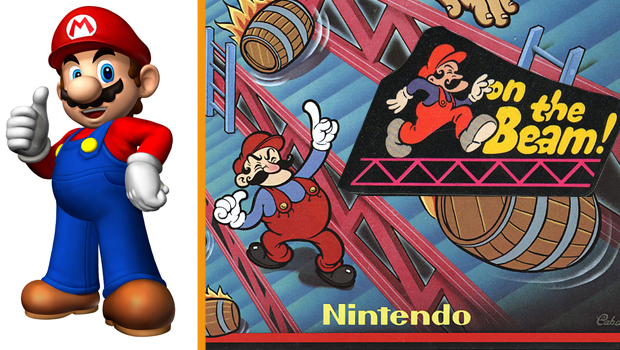
Mario was Ossan (aka Popeye)
If you've already read up on our wealth of Nintendo and Mario trivia, then you may know where this story begins. Way back in 1981, a youthful Shigeru Miyamoto was toiling away at his first big project for Nintendo: an arcade game starring that spinach-loving sailor Popeye. The premise was fairly simple, tasking the player with guiding Popeye up some scaffolding to save Olive Oyl from the clutches of the brutish Bluto.
Unfortunately for Miyamoto, Nintendo had just lost the rights to the Popeye branding, meaning that these early designs were now copyright infringement. Thinking fast, Miyamoto tweaked the premise to star a mustachioed man saving a girl from a giant ape. That game would go on to become Donkey Kong--and in its earliest official art, Jumpman (who would later be known as Mr. Video, then Mario) clearly has some remnants of Popeye's design, like squiggly lines for eyes and a short and stocky stature. And here's a fun fact: Mario's first name was actually "Ossan," Japanese for "middle-aged guy," because calling him "Jumpman" wasn't generic enough.
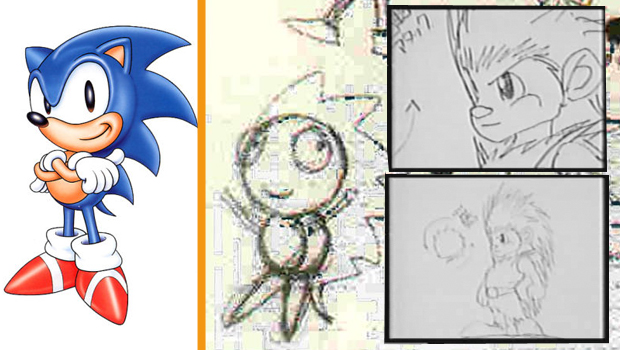
Sonic was Mr. Needlemouse
Sega's mascot almost didn't have a nose. Before he was known as Sonic the Hedgehog, the blue blur was codenamed Mr. Needlemouse--"needlemouse" being the Japanese translation of "hedgehog" which, when you think about it, makes a lot more sense. When developer Naoto Ohshima was first sketching out preliminary designs for Senor Needlemouse, one concept portrayed him as a bug-eyed, noseless egghead with a creepy smile.
Even stranger was a sketch that gave Needlemouse a humanoid face, slapped onto a stubby, prickly body. But the cherry on top of the weirdness cake was the concept art for Madonna, an illogically proportioned human woman that would serve as the hedgehog's love interest and chase him around each stage. It also bears mentioning that, at one point, Sonic was going to be the lead singer in a rock band composed of other anthropomorphic animals. We're not sure what the execs at Sega were smoking, but fortunately they came to their senses and axed these concepts from the final product.
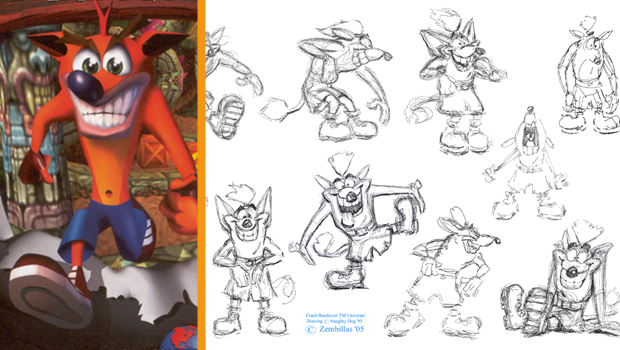
Crash Bandicoot was Willie the Wombat
Crash Bandicoot is already a goofball of a hero, what with his penchant for pelvic-thrusting victory dances and jumping on boxes of TNT. But that's nothing compared to the silliness his original concept. Naughty Dog co-founders Andy Gavin and Jason Rubin wanted to craft a potential Sony mascot, and were inspired by cartoonish animals like Sonic the Hedgehog and Looney Tunes' Tasmanian Devil. They decided to see what other marsupials might make for a compelling video game hero.
They first landed on Willie the Wombat, a shorts-sporting buffoon with a tail and the kind of lobotomized, wide-eyed grin that you'd expect to see on a Chuck E. Cheese robot. We can imagine Willie's design frightening children just as easily as delighting them. And then there's the problem of his name being a penis synonym. Gavin and Rubin eventually came to their senses, and Willie the Wombat was scrapped, replaced by an orange bandicoot who looks decidedly less dorky.
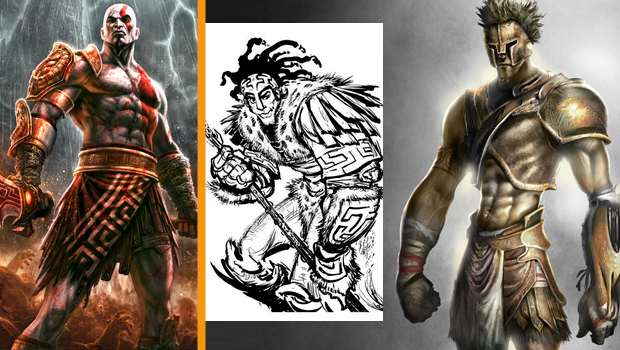
Kratos was the god of dreadlocks
Besides his snazzy Greco-Roman goatee and eyebrows, our favorite ashen-skinned antihero is as bald as the day is long. But there was a time during the original God of War's production when Kratos sported some seriously sweet dreadlocks. If you poke around the bonus Character Graveyard unlocked after beating the original God of War, you'll find this magnificently haired chap in a lineup of Kratos prototypes.
According to the in-game backstory blurb, this was the art director's first pick to be the vengeful demigod. But the design didn't sit right with creator David Jaffe, who deemed the dreadlock design "not brutal enough, not vicious enough, to be the star of God of War." Having seen this design as the unlockable Forgotten Warrior costume in God of War III, we're inclined to agree. While cool, this design seems like it would be a better fit in The Mark of Kri, and we have a tough time picturing him screaming "AREEEEEEEEES" at the top of his lungs.
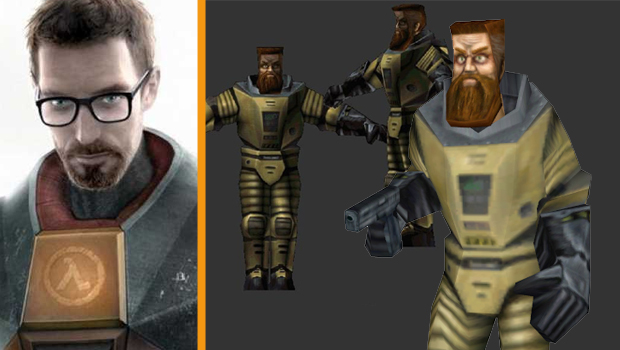
Gordon Freeman was Ivan the Space Biker
So, you think Gordon Freeman's just some mute, four-eyed lab geek? Little do you know of his history as a hardened, fully bearded man's man. When this Black Mesa scientist was first being built, his character model was a burly fella with a tan-colored HEV suit and a beard that would put any modern-day Vikings to shame. The somewhat goofy appearance of this character model earned him the name "Ivan the Space Biker," given how easy it is to picture this guy starting fistfights in an intergalactic bar and grill.
Thank Gaben that this didn't become the real Gordon Freeman, because we don't think we could take his rectangular head or lustrous facial hair seriously. We may not know what the world's top scientists in secret government facilities look like, but we're guessing they don't look like this. That said, Ivan does have Gordon's green eyes and brown hair. Perhaps he's just an alternate universe version of Freeman who's living under a freeway somewhere.
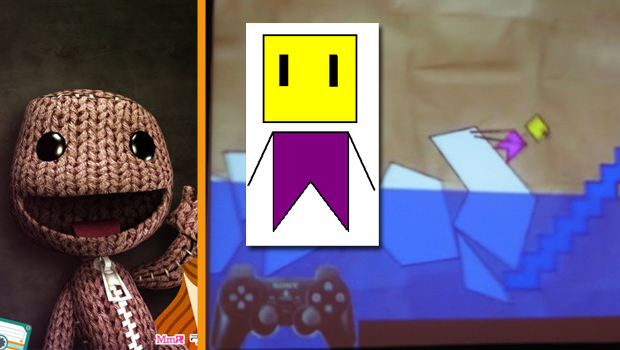
Sackboy was Yellowhead
No, this wasn't a rejected product placement for those supremely sour Lemonhead candies. Much like Portal or Octodad, Media Molecule's LittleBigPlanet started as a small proof-of-concept game. In the case of LBP, that game was Craftworld, which showed off the fun gameplay brought about by combining a responsive physics engine with traditional 2D platforming. It starred Yellowhead, a dinky hero composed of simple lines and shapes. As you might've guessed, his most notable characteristic was a bright yellow box for a head.
Yellowhead could pull and prod objects in his environment, demonstrating how the concept could work in a full game. Of course, Yellowhead wasn't nearly as jolly as our beloved Sackboy, given that he was entirely expressionless. But Media Molecule hasn't forgotten about the little guy, including him as a secret character for those who have the stones to beat Little Big Planet's final level without dying.
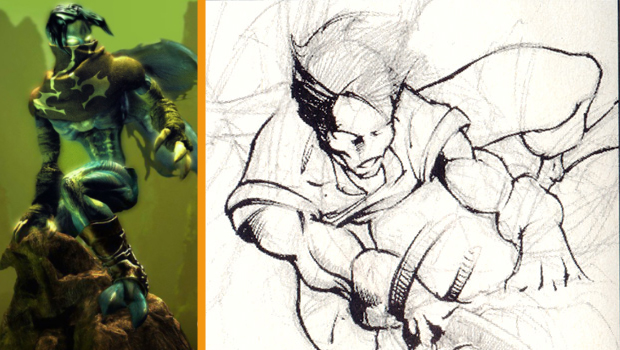
Raziel was Shifter
For many, Raziel is the best part of the Legacy of Kain series--his incredibly cool design is essentially the soul-reaping undead version of a Protoss Zealot from StarCraft. Turns out, he almost wasn't a part of the Legacy of Kain universe whatsoever. Raziel's is a modified version of the protagonist of Shifter, a new IP being developed at Crystal Dynamix back in 1995. This unnamed hero had the ability to jump between different planes of existence, hence the name Shifter.
Execs are Crystal Dynamix and Eidos didn't have faith that the idea could carry an original IP, and assimilated the idea into the Legacy of Kain franchise. Parallels between Shifter and what ended up being Soul Reaver are plentiful: Raziel's character design was lifted straight from the scarf-wearing protagonist of Shifter, and The Council and Elder Kain (originally dubbed "The Master") were born from Shifter's early concepts. Luckily, no work was lost during the overhaul, as Shifter never made it past the prototypes on paper.
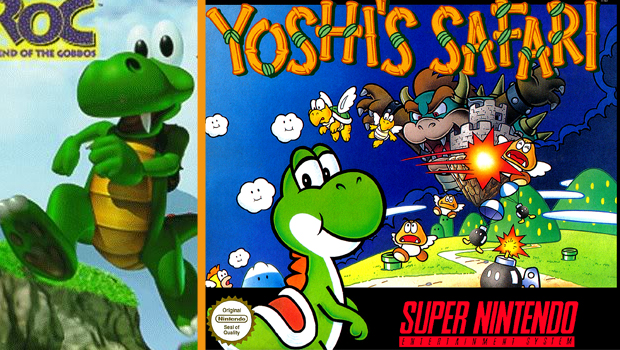
Croc was Yoshi
When you're a lowly editor at a prolific video game website, you know all too well the feeling of working tirelessly on an idea, only to have it shot down during a pitch meeting. That's exactly what developer Argonaut Software went through when they approached Nintendo with a plan for Yoshi game. The concept would bring Mario's trusty dino pal into the spotlight, letting him explore a fully 3D world powered by the Nintendo 64. Nintendo told Argonaut to go stuff themselves, wanting to retain full control of any game starring its iconic characters.
Miffed by the rejection, Argonaut cut ties with Nintendo, developing their idea into Croc: Legend of the Gobbos and turning the reptile lead into Croc, a vegetarian crocodile. In a somewhat spiteful move, Argonaut purposefully released Croc on Nintendo's competing platforms: PC, PS1, and Saturn. Argonaut founder Jez San said in an interview that "Miyamoto-san came up to me at a show afterwards and apologized for not doing the Yoshi game with us, and thanked us for the idea to do a 3D platform game." This translates to, "Super Mario 64 destroyed you with your own idea, sucker!"
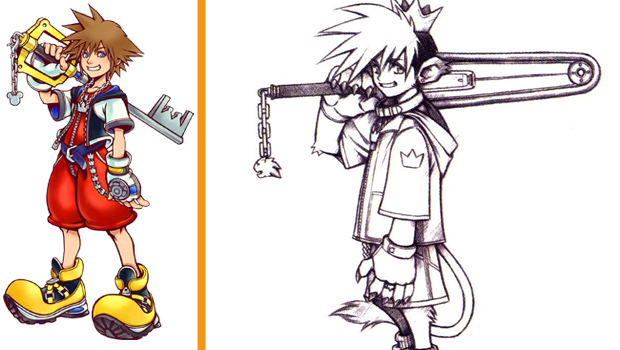
Sora was a chainsaw-wielding animal boy
We bet that Heartless would start running scared if Sora came after them with a revved-up chainsaw. When Kingdom Hearts was first conceptualized, Square wanted Mickey Mouse as the lead, and Disney thought Donald Duck should be the star. Producer Tetsuya Nomura decided to take things in a different direction, creating an original character to be the game's hero. His first mockup shows a glimmer of Sora, with the upbeat smile and enormous shoes. What might not be so familiar are the lion's tail and claws, a crown atop his head, and the chainsaw-style weapon he's wielding.
It may not have serrated edges, but Sora's old weapon definitely had some cutting power using a spinning blade mechanism. Nomura recalls showing off this design to Disney execs: "Everyone got this scrunched-up look on their face, and nobody said a word in the entire room. Dead silence. And I thought 'No, I guess this wouldn't work, huh?'" That somewhat unsavory device would eventually transform into the Keyblade we now know and love.
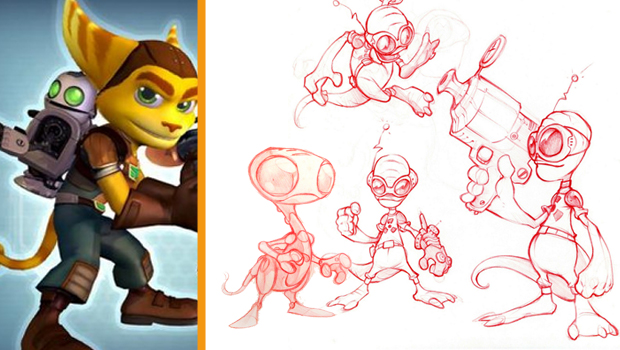
Ratchet and Clank were two reptilian aliens
We wouldn't want to live in a world where the furry lombax Ratchet and his loyal robot buddy Clank existed. Luckily, our ritualistic suicides were averted by changes made during Ratchet & Clank's development--because originally, they were a pair of lizard-like heroes. Insomniac Games' John Fiorito posted on the PlayStation Blog that "The idea was to create a spunky alien with a crazy gadget gauntlet and some bionic commando traversal abilities." That core idea led to the creation of what looked like a secret agent gecko decked out in the latest spy tech.
Perhaps it's evolutionary, but some gamers have a hard time connecting with the plights of a cold-blooded animal. Ratchet became hairer with each new iteration of his design; "Eventually his reptilian body gave way to a more relatable cat form," says Fiorito. Clank had a similarly alien design, which resembled a robotic salamander. The body changed; the adorably enormous eyes stayed the same.
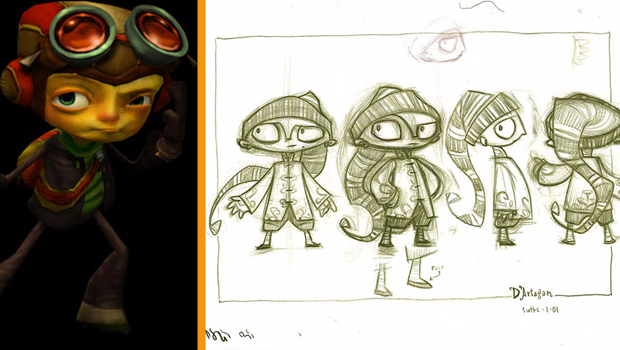
Razputin was Dart
We can't picture Psychonauts starring anyone but Raz, the adorable telekinetic prodigy who saved lives and minds at Whispering Rock Psychic Summer Camp. But his trademark suit-and-goggles style only came about late into Psychonauts' development. The original hero was slated to be Dart--short for D'Artagan--a similarly proportioned boy with an ornate coat and a long stocking hat.
This design made it all the way to the character modeling stage, when the animators realized they had a big problem: Dart's hat would be a nightmare to animate, given how frequently it'd be bobbing around throughout all the running and jumping. It also looked like a ponytail at a glance, which might cause players to think Dart was a girl. So the Dart design was scrapped, and necessity eventually led to Razputin's final look. And thank goodness--without the goggles, we'd never have the running Goggalor joke, and that would truly be a crime.
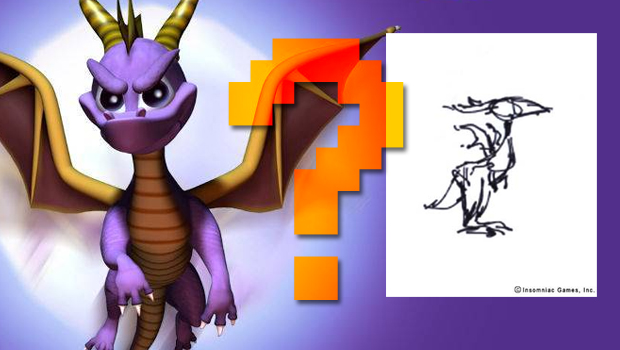
Humble beginnings
Any other character designs you're curious to see the beginnings of? Here's some more fun facts you can use to impress your friends: Spyro the Dragon was originally green instead of purple, but blended in too much with his grassy environments. Lara Croft was initially Laura Cruz, but the name was changed to sound more British in accordance with her heritage. Share your obscure knowledge and curiosities with us in the comments below!
And if you're looking for more, check out 12 Mario games youve probably never heard of and 29 obscure fighters that deserve HD remakes.

Lucas Sullivan is the former US Managing Editor of GamesRadar+. Lucas spent seven years working for GR, starting as an Associate Editor in 2012 before climbing the ranks. He left us in 2019 to pursue a career path on the other side of the fence, joining 2K Games as a Global Content Manager. Lucas doesn't get to write about games like Borderlands and Mafia anymore, but he does get to help make and market them.


